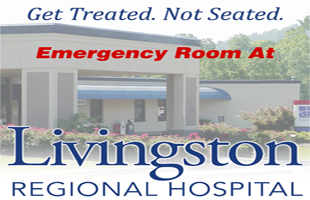It is Crash Responders Safety Week and the State of Tennessee wants to raise awareness about the importance motorists play in the safety of first responders working an emergency.
Putnam County EMS Paramedic and CPR Coordinator Leslie Motevalli said they have close calls to having a serious wreck almost every day when responding to an emergency. Moetevalli said one of the worst intersections for emergency vehicles to drive through is the Jefferson Avenue and Jackson Street intersection. Moetevalli said three months ago she was responding to an emergency and nearly witnessed a secondary wreck.
“As I was coming down the hill in the intersection there was a police car coming and I saw them and they saw me,” Moetevalli said. “They needed to go before me so I let them go and I was trying to turn left and a car behind me decided that he wanted to go straight so he came around me and almost hit that police car.”
Jackson County EMA Public Affairs Officer Derek Woolbright said has seen emergency workers injured trying to help others.
“In my time here we have had two instances of that where responders were injured so that’s really what sticks out to me,” Woolbright said. “Probably the most dangerous part of what we do that people don’t think about is just how often we deal with traffic.”
Moetevalli said a lack of cooperation from motorists can affect response times and can be the difference between life or death for the person the first responders are trying to get to. Woolbright said when an emergency vehicle is coming through is to move to the right and slow down to a complete stop.
“So many people want to do a million different things and it truly is as simple as just when an emergency vehicle is behind you pull to the right and stop,” Woolbright said. “If you are not in a spot where you can pull to the right then just stop and stop where you are at let the emergency vehicle navigate around you.”
Moetevalli said first responders are actually trained to maneuver traffic. Motevalli said in a case where they see another wreck happen when responding to a separate emergency they are obligated to check the accident that just happened.
“We have to respond if it looks like it could have some potential injury, catastrophe, or anything like that,” Moetevalli said. “If we see a little bit of a fender bender we get on the radio and let them know like hey we witnessed this it didn’t look bad and we immediately call it in and let someone know that it happened.”
Moetevalli said once she had a non-emergency patient in the back of an ambulance and witnessed a car spin out and flip on the interstate and she had to stop and render aid. Motevalli and Woolbright believe distracted driving is one of the main culprits to this issue.
“Distracted driving is a big thing,” Moetevalli said. “If you look left you look right I guarantee you that at least one of them is going to be on their phone if not both of them.”
“I think distracted driving is probably the new drunk driving of our generation,” Woolbright said. “Not that impaired driving is not still a definite problem here and everywhere but I think distracted driving probably causes more crashes and fatalities than impaired driving does these days and that’s probably due to that there is so many distractions.”
Motevalli said what to do when an emergency vehicle is coming through is not covered enough. Motevalli said she has been working to do public service announcements to raise more awareness about the issue.
 News Talk 94.1/AM 1600 Where The Upper Cumberland Talks
News Talk 94.1/AM 1600 Where The Upper Cumberland Talks







